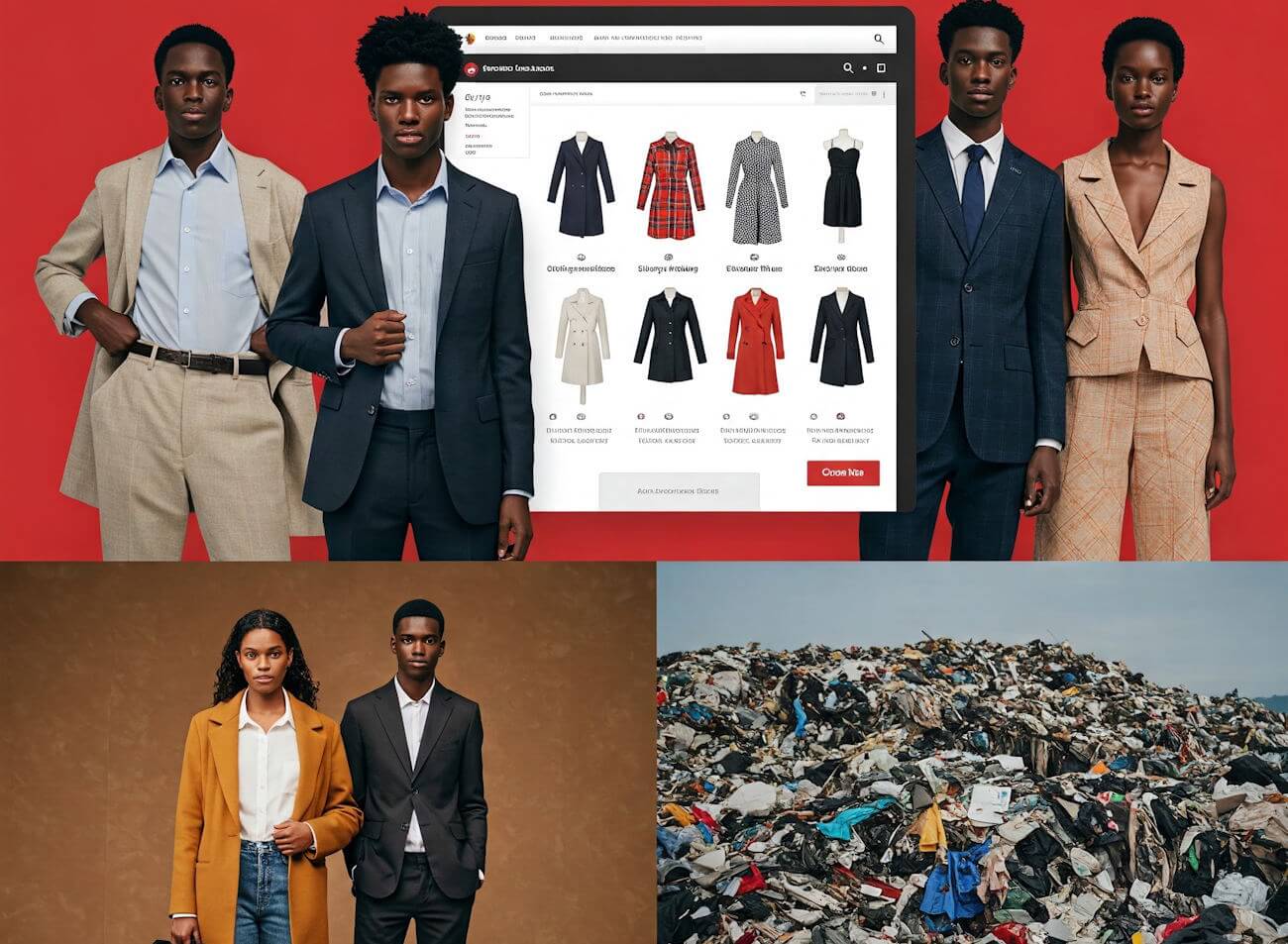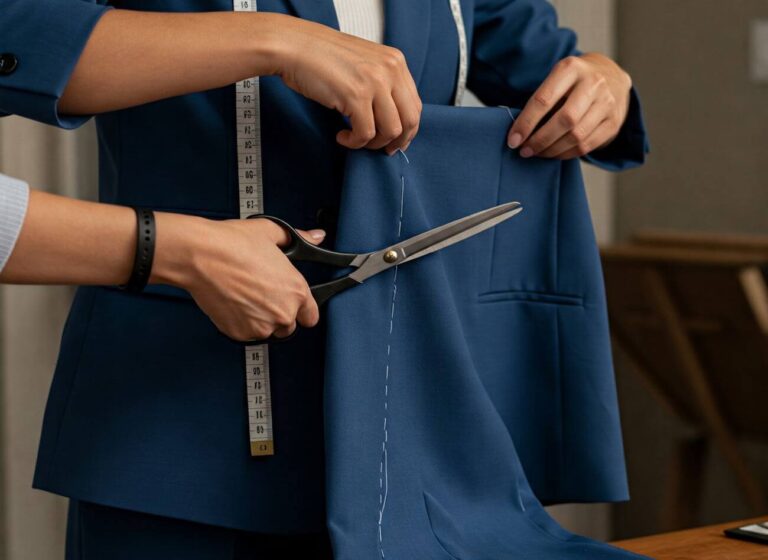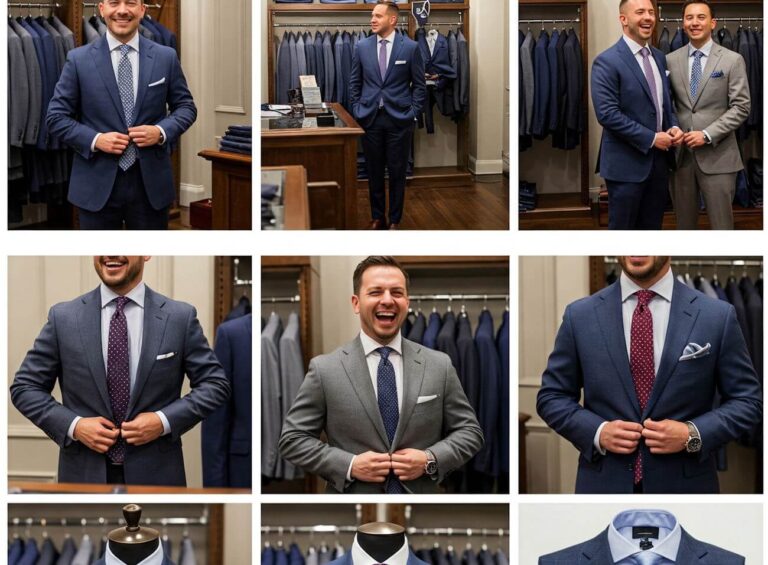Can Rental Fashion Help Fight Fast Fashion Waste?
Introduction to Fast Fashion
Fast fashion refers to the rapid production of inexpensive clothing, allowing brands to respond quickly to the latest fashion trends. This model emphasizes speed and affordability, enabling consumers to purchase low-cost apparel that mimics designer styles. The result is a never-ending cycle of purchasing, wearing, and discarding garments, which ultimately fuels a culture of overconsumption. This consumption habits are significantly influenced by the marketing strategies employed by fast fashion retailers, which continually promote new collections and limited-time offers to entice customers.
Fast fashion companies typically operate on a “design-to-retail” timetable that can be as short as a few weeks. This accelerated pace often prioritizes quantity over quality, using cheap materials that are readily accessible and cost-effective. Consequently, garments produced in this manner tend to lack durability and have a shorter lifespan. Moreover, fast fashion’s reliance on low-cost labor often leads to unethical labor practices in developing countries, where most of the production occurs.
The environmental implications of fast fashion are substantial. It is estimated that the fashion industry is responsible for 10% of global carbon emissions and is a significant contributor to water pollution, with the production process involving harmful chemicals that frequently find their way into water systems. Additionally, the alarming statistic that indicates over 92 million tons of textile waste is generated annually underscores the urgent need for change. Given these facts, fast fashion is not only a significant environmental threat but also a social concern. With an increasing awareness of these issues, many consumers are seeking sustainable alternatives, making rental fashion an appealing option for reducing waste and encouraging responsible consumption.
Understanding Rental Fashion
Rental fashion is a burgeoning trend that allows consumers to access clothing for a limited period instead of purchasing items outright. This concept operates on the premise that rather than owning garments, individuals can rent them for special occasions, daily wear, or even for a specific season. By utilizing rental services, consumers can enjoy a greater variety of clothing options without the long-term commitment or financial burden associated with traditional purchasing methods.
One of the primary advantages of rental fashion is affordability. Renting provides consumers with access to high-quality, designer pieces at a fraction of the retail price, making it an appealing option for those looking to elevate their wardrobes without overspending. Additionally, rental fashion enhances sustainability, as it promotes a circular economy by extending the lifecycle of garments. By choosing to rent instead of buy, consumers reduce the overall demand for fast fashion, a sector known for its significant environmental impact, including waste and resource depletion.
The popularity of rental fashion has surged in recent years, aided by the emergence of numerous platforms and brands dedicated to this model. Companies such as Rent the Runway, Le Tote, and HURR Collective are leading the way, offering extensive selections that cater to varying tastes and sizes. These platforms typically operate by allowing users to browse through curated collections, select items for rent, and receive them via delivery services. After the rental period ends, items are returned through a simple process, which often includes provided shipping materials.
As more consumers become aware of the adverse effects of fast fashion, the shift toward rental fashion represents a positive change in shopping behavior. By prioritizing rental options, individuals not only gain access to versatile wardrobes but also contribute to reducing fashion waste significantly.
Environmental Impact of Fast Fashion Waste
The phenomenon of fast fashion has significantly contributed to environmental degradation, characterized by high levels of textile waste, pollution, and resource depletion. Fast fashion brands produce vast quantities of clothing designed to be worn a handful of times before being discarded. According to recent estimates, the industry generates approximately 92 million tons of waste annually, a staggering figure that underscores the urgent need for more sustainable practices.
The lifecycle of garments within the fast fashion model begins with rapid production cycles, often resulting in overstock and surplus clothing that ultimately ends up in landfills. It is estimated that around 85% of all textiles produced are discarded each year, only compounding the crisis of fast fashion waste. This relentless cycle not only contributes to overflowing landfills but also emits harmful greenhouse gases, which exacerbate climate change by releasing pollutants during both manufacturing and decomposition processes.
Additionally, the water footprint of fast fashion is a pressing concern. The production of one cotton t-shirt can consume upwards of 2,700 liters of water, enough for one person to drink for two and a half years. In regions already facing water scarcity, such resource depletion poses severe risks. Moreover, the chemical runoff from textile manufacturing pollutes local water bodies, destructing aquatic ecosystems and jeopardizing the health of communities reliant on these water sources.
The ecological ramifications extend beyond waste and water pollution; they also include the depletion of natural resources required for fabric production, including fossil fuels and non-renewable materials. This unsustainable consumption pattern not only threatens biodiversity but also reflects a systemic contradiction in consumer behaviors, where the demand for inexpensive and disposable clothing leads to detrimental environmental impacts.
There is an urgent need for a transformation in our approach to fashion consumption, encouraging sustainable alternatives that minimize the detrimental effects of fast fashion waste on our planet. Such changes can foster a more environmentally conscious society that values longevity and sustainability in fashion choices.
How Rental Fashion Reduces Waste
The fast fashion industry is known for its significant contribution to environmental degradation, fueled by rapid production cycles and a culture of disposability. In contrast, rental fashion offers a sustainable alternative that effectively reduces waste associated with traditional apparel consumption. By extending the product life cycle, rental fashion allows garments to be worn multiple times by different consumers, minimizing the need for new production. This reduction in demand for new clothing directly correlates with less waste generated from manufacturing processes, which often involve resource-intensive practices.
According to a study conducted by the Ellen MacArthur Foundation, the average garment is worn only seven times before it is discarded. In contrast, rental services encourage consumers to leverage garments for extended periods, leading to significant reductions in overall textile waste. For instance, brands like Rent the Runway have reported that their model allows for increased utilization of each item, meaning fewer new products are necessary. This paradigm shift not only supports the longevity of clothing but also promotes sustainable consumer practices.
Moreover, the rental fashion model emphasizes the importance of keeping clothing in circulation, which mitigates the issue of garments ending up in landfills. A case study highlighting the success of clothing rental brands indicates that when consumers opt to rent instead of purchase, it translates to fewer discarded items. This is crucial in a society where an alarming volume of textiles (approximately 92 million tons annually) is thrown away worldwide. Ultimately, by choosing rental fashion, consumers can significantly contribute to reducing the environmental impact of the fast fashion industry.
Consumer Behavior and Mindset Change
The fight against fast fashion waste requires a significant shift in consumer behavior and mindset. Traditionally, ownership has been equated with status and self-identity, prompting individuals to purchase items that they may only wear once or twice. This culture of overconsumption necessitates an urgent transformation, as it contributes to an alarming amount of textile waste. Rental fashion emerges as a viable alternative, yet numerous barriers still inhibit its acceptance among consumers.
One of the primary obstacles is the lack of awareness regarding the environmental and ethical implications of fast fashion. Many consumers remain unaware of the environmental degradation caused by textile production and waste. Educational initiatives that highlight the sustainability of rental fashion can encourage consumers to perceive renting as not only a practical choice but also an ethical one. It is imperative to articulate how this model reduces waste and promotes circular fashion practices.
Furthermore, personal values and societal norms significantly influence consumer decisions. For individuals who prioritize sustainability, rental fashion may resonate more deeply, while others, who place value on ownership, may find it challenging to adapt to a rental model. Social influence plays a crucial role, as positive endorsements from peers or influencers can help demystify the concept of rental fashion, positioning it as a fashionable and responsible choice.
Additionally, integrating educational content about rental fashion into mainstream conversation can catalyze this shift. Campaigns focusing on the financial and environmental benefits of renting clothing can break down preconceived notions surrounding ownership and elevate consciousness about consumption habits. Thus, transforming consumer attitudes toward fashion rental can foster a generation more invested in sustainable practices, ultimately contributing to a reduction in fast fashion waste.
Challenges Facing Rental Fashion
While rental fashion presents a promising alternative to fast fashion, it is not without its challenges. One of the primary issues confronting the rental fashion industry is the logistical complexities that arise from the need to manage a rotating inventory of garments. Ensuring that items are available on demand involves a sophisticated supply chain, including tracking inventory, managing returns, and maintaining an efficient distribution system. This complexity can lead to delays that leave customers dissatisfied and ultimately deter them from opting for rental options.
Another significant challenge is the proper care of garments. Rental companies must invest in high-quality cleaning and maintenance processes to preserve the integrity and appearance of the clothing. Consumers expect to receive items that are in pristine condition, which necessitates rigorous standards for garment care. Any lapse in this area can result in negative customer experiences or damage to a brand’s reputation. The financial implications of maintaining such standards can also present a barrier for smaller rental companies.
Moreover, there exists a social stigma around wearing ‘used’ clothes, which can hinder the acceptance and growth of rental fashion. Many individuals still associate rented garments with lower social status or a lack of personal style. Combating this perception requires a cultural shift and may involve strategic marketing efforts aimed at changing consumer attitudes toward second-hand wear. Effective branding that highlights the sustainability and ethical advantages of rental fashion may help to overcome these entrenched perceptions.
In summary, while the rental fashion industry is poised to contribute positively to the fight against fast fashion waste, it must navigate several challenges, including logistics, garment maintenance, and societal attitudes towards second-hand clothing. Addressing these issues effectively is crucial for the industry’s long-term sustainability and success.
Success Stories and Innovations in Rental Fashion
Over the past few years, the rental fashion industry has witnessed remarkable success stories that not only resonate with consumers but also prioritize sustainability. Companies like Rent the Runway have revolutionized the way individuals perceive fashion consumption by offering an extensive range of designer clothing and accessories for rental. This innovative model allows consumers to enjoy high-end fashion without the burden of purchasing items that may only be worn once. Moreover, Rent the Runway has engaged its audience by providing subscription services, thus fostering repeat usage and encouraging a more sustainable approach to wardrobe choices.
Another noteworthy example is Le Tote, a fashion rental service that emphasizes personal styling by curating outfits based on individual preferences. By leveraging technology, Le Tote utilizes a personalized algorithm that enhances the shopping experience, enabling customers to embrace new styles while minimizing their environmental impact. The incorporation of data analytics helps the brand to predict trends and maintain sustainable stock levels, effectively reducing waste.
Several smaller, independent brands are also making significant strides in the rental fashion space. For instance, HURR Collective, based in London, encourages a community-driven approach where individuals can lend and borrow fashion items. This peer-to-peer rental model not only promotes circular fashion but also empowers consumers to take ownership of their wardrobe choices while fostering a sense of community.
Additionally, partnerships with leading technology companies are further enhancing the rental fashion landscape. Innovations such as AI-driven inventory management systems and augmented reality for virtual try-ons are proving invaluable. These technologies not only streamline operations but also enhance customer engagement, providing a seamless rental experience. By prioritizing sustainability, convenience, and consumer interaction, the rental fashion industry is indeed paving the way for a more responsible fashion future.
Future of Fashion: Integrating Rental into Mainstream Culture
The future of fashion is witnessing a significant shift as rental models gain traction and become an integral part of mainstream culture. The surge in awareness about the environmental impact of the fast fashion industry has led consumers to seek more sustainable alternatives, aligning with the principles of circular economy. As a result, clothing rental services have emerged as a viable option, separating themselves from traditional ownership models.
One of the notable trends in the fashion industry is the growing collaboration between rental platforms and established retailers. Many traditional brands are beginning to incorporate rental sections into their business models, recognizing the need for diversification in a rapidly changing market. This trend not only broadens the consumer base for these retailers but also provides a sustainable avenue for promoting their collections. By engaging in these partnerships, brands can reduce inventory waste while meeting the demand for trendy clothing without the commitment of purchase.
Moreover, special events such as weddings, proms, and other celebrations are evolving in response to the popularity of rental fashion. Couples and individuals are increasingly opting for rented attire, which allows them to enjoy high-quality garments for a fraction of the cost. This trend not only makes fashion more accessible but also aligns with sustainability goals, as fewer items are manufactured and purchased. The stigma traditionally associated with renting clothes is dissipating, paving the way for a more collective and eco-conscious mindset among consumers.
The integration of rental fashion into everyday life is likely to change consumer habits significantly. Shoppers may begin to prioritize experiences and sustainability over ownership, leading to a paradigm shift in how society perceives fashion consumption. As rental options become more commonplace, the fabric of the fashion landscape will continue to evolve, presenting both challenges and opportunities for all stakeholders involved.
Conclusion: Embracing a Sustainable Fashion Future
As we navigate the complexities of modern consumerism, the growing awareness around the detrimental impacts of fast fashion on our environment cannot be ignored. In this blog post, we have explored how rental fashion emerges as a viable solution to mitigate the pressing challenge of fashion waste. By choosing to rent rather than purchase, consumers can significantly reduce their contribution to landfill overflow and the negative carbon footprint associated with clothing production.
The rise of rental platforms offers a sustainable alternative, providing individuals access to high-quality, stylish garments without the need for constant purchasing. In turn, this practice not only elongates the lifecycle of fashion items but also promotes a culture of sharing, where users can enjoy curated pieces for special occasions without the guilt of contributing to textile waste. Such an approach aligns seamlessly with the principles of circular fashion, emphasizing the importance of reusing and recycling resources within the fashion industry.
Moreover, it is essential to acknowledge the collective responsibility that both consumers and fashion brands hold in this fight against fast fashion waste. By actively participating in rental schemes and supporting sustainable initiatives, we can collectively encourage brands to adopt more environmentally friendly production processes. As consumers become more discerning and demand transparency, brands are compelled to shift towards sustainable practices.
We call upon readers to reflect on their fashion consumption habits and consider embracing rental fashion in their lives as a step toward contributing to a more sustainable future. Let us foster discussions on this topic and inspire others to make conscious choices. Together, through informed decisions, we can pave the way for a fashion industry that prioritizes the planet and the people who inhabit it.







